A few weeks after the Wisconsin Supreme Court invalidated the state’s “Safer at Home” emergency order, state and local leaders continue to grapple with the ongoing pandemic and economic recovery. The Department of Health Services (DHS) has declined to promulgate Safer at Home as a statewide rule and instead some local health departments have orders in place. Gov. Tony Evers has also begun allocating federal funds for Wisconsin COVID-19 efforts.
Local Orders
Immediately following the Supreme Court ruling, Dane County announced its own local order mandating residents to stay at home, and many other local health departments followed suit.
It was initially unclear whether the Supreme Court order limited local governments’ powers under Wisconsin’s communicable disease statutes as it did DHS’s. Several local governments quickly rescinded their stay-at-home orders after guidance from the Wisconsin Counties Association and League of Wisconsin Municipalities said local governments’ authorities under the Supreme Court order were unclear.
In response to a request from the Outagamie County Executive, Wisconsin Attorney General Josh Kaul quickly issued an advisory opinion on the applicability of the Supreme Court decision to local health orders. The opinion advises that local governments may issue orders to address COVID-19 but should not enforce criminal penalties for violations. Specifically, the opinion concluded:
- The Legislature v. Palm case does not directly control local government powers to address communicable diseases.
- Per the court’s findings in Palm related to criminal enforcement, localities should limit enforcement to ordinances or administrative enforcement rather than criminal penalties tied to state statute.
- Because statutory rulemaking requirements apply only to state agencies, local governments may have more authority than DHS to issue broad stay-at-home orders as long as they are within local governments’ statutory powers under Wis. Stat. § 252.03(1)-(2).
With guidance from the AG opinion, many local orders including Dane County and Milwaukee remain in place, though they are beginning to dial back as localities seek to safely reopen.
A group of 17 plaintiffs have filed a lawsuit against local health officials arguing local orders violate their constitutional rights. That case is pending in federal court.
DHS Rulemaking
After the Supreme Court found that the Safer at Home order was a “rule” required to go through statutory rulemaking processes, Gov. Evers and DHS began the process to promulgate a similar order as an emergency rule, in accordance with the ruling. Gov. Evers approved a scope statement for an emergency rule on May 14. The scope statement said the emergency rule could include provisions similar to Safer at Home and a phased reopening plan similar to what the Evers administration had proposed in the “Badger Bounce Back” plan.
Republican legislative leadership, including Sen. Steve Nass (R-Whitewater), the chairperson for the Joint Committee for Review of Administrative Rules (JCRAR), immediately criticized the language of the scope statement, stated that they are not interested in “micromanaging” businesses as they begin to reopen and instead prefer to focus any rulemaking on big picture issues like large gatherings and K-12 schools. Nass sent a letter to DHS asking the agency to withdraw the scope statement. His committee would have had the power to suspend the emergency rule.
DHS ultimately did withdraw the scope statement on May 18 and has not indicated they will put forth a statewide rule of any kind. Local public health orders remain in place, though many are beginning to dial back restrictions.
Allocation of Federal Dollars
The federal CARES Act provided Wisconsin approximately $2 billion in funding for COVID-19 efforts. Gov. Evers has begun announcing how his administration will use the funds. Programs include:
- $10 million for clinics serving underserved populations;
- $200 million for local government recovery grants, allocated by population;
- $100 million for long-term care, home and community-based services, and emergency medical services;
- $50 million for relief for farmers and a $15 million food security initiative;
- $25 million rental assistance program;
- $1 billion effort to support COVID-19 testing, contact tracing, acquisition of needed supplies, emergency operations, and resources for local communities; and
- $75 million small business grant program.
